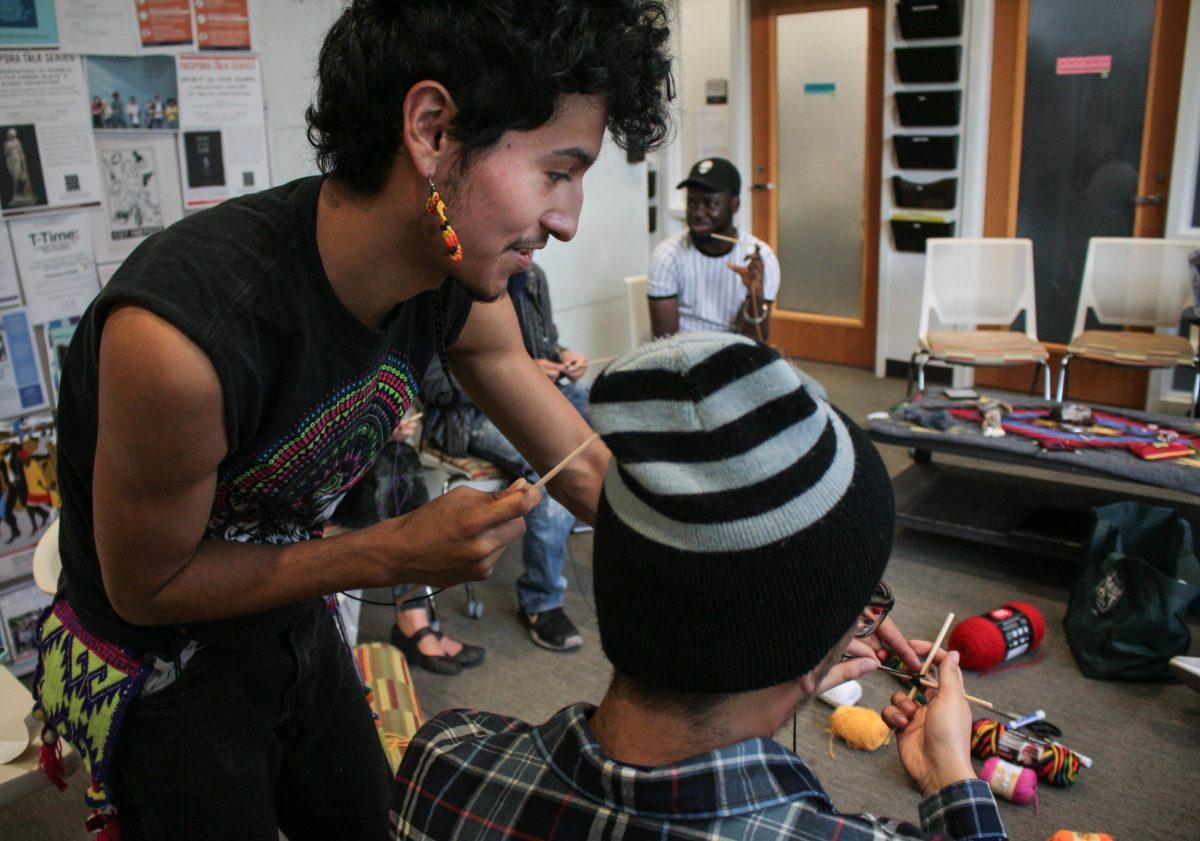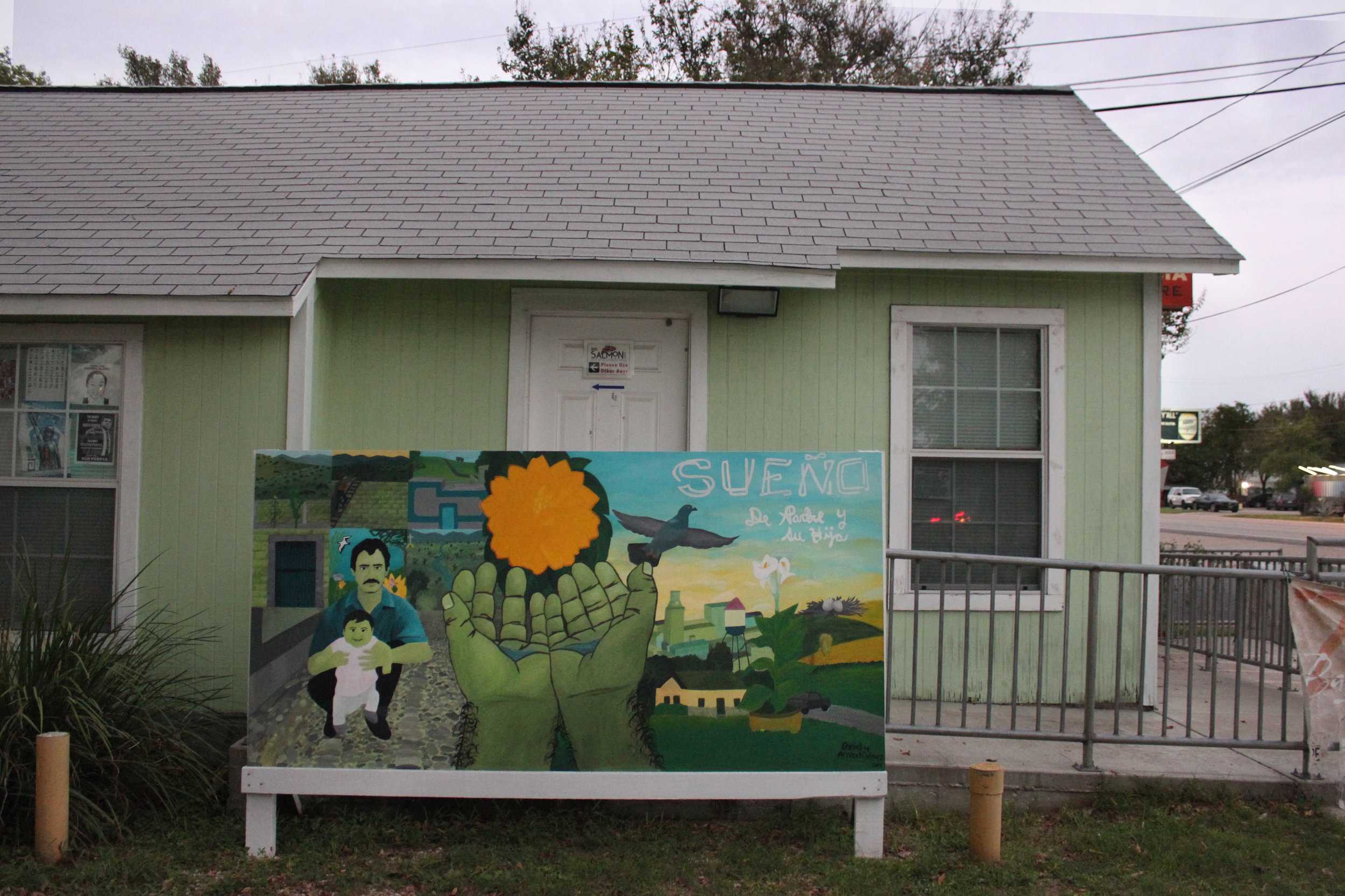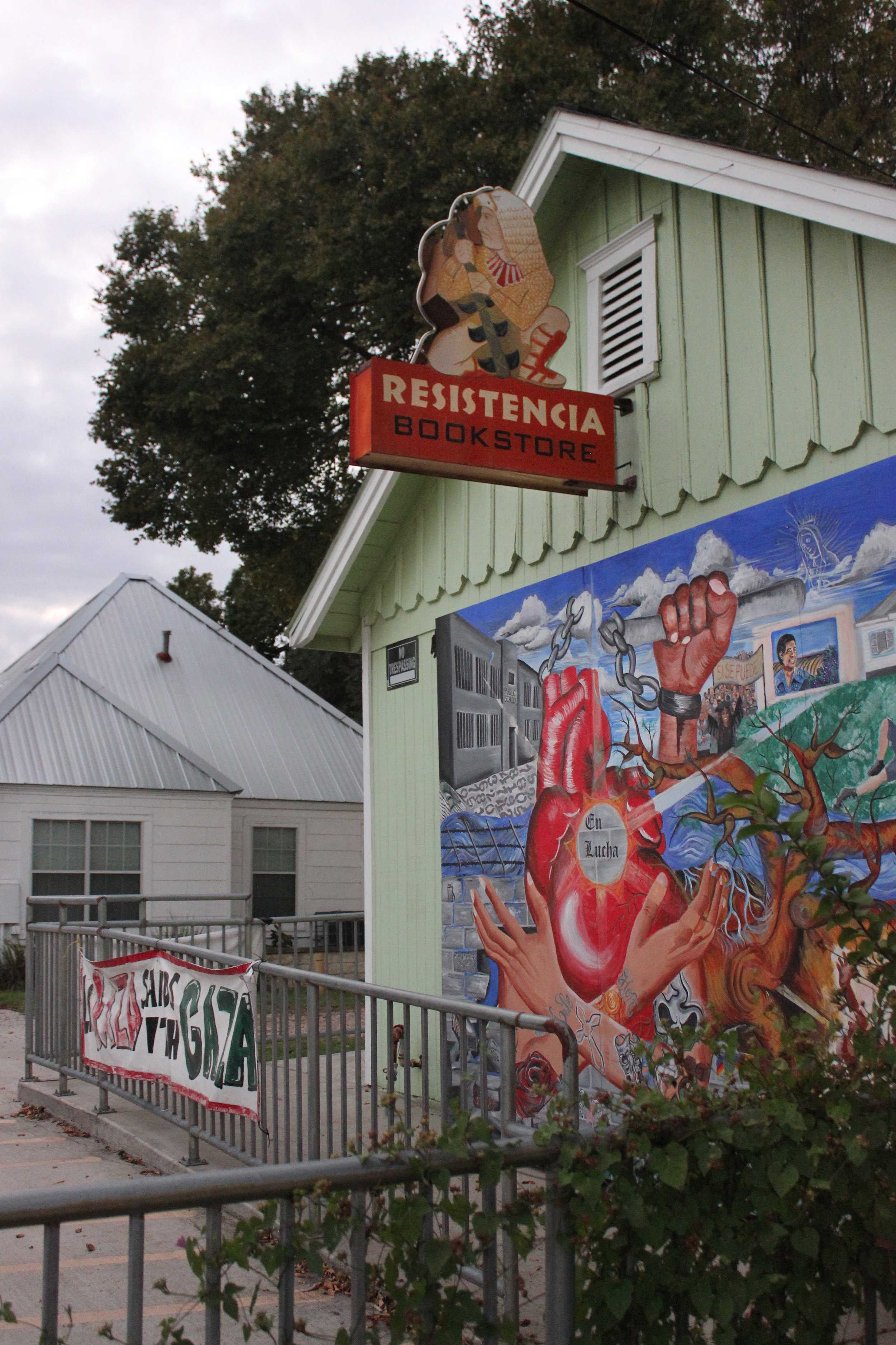Last week, Austin’s Indigenous leaders brought conversations about recognition, representation, and acceptance to campus.
Ramirez’s workshop on crafting Ojos de Dios.
Story by Savannah Whitmer and Aize Igori
Photos by Erika Casales and Ashley Nava
For The Native American and Indigenous Collective’s first ever Indigenous Peoples’ Week, the kickoff event featured a panel that started with a curious question: What is your relationship to water?
One of Indigenous Peoples’ Week’s organizers, Angela Lorena Vela, an Indigenous Las Minas speaker at the “Decolonize UT” intergenerational panel and UT student, says she has always felt a spiritual connection to water. She remembers spending time as a child with her dad when it rained, or listening to her grandmother as she told stories of washing clothes and swimming in the Rio Grande.
“I grew up very close to the Rio Grande, and I always felt that there was some type of sacred connection between me and that river,” Vela says. “I always felt that it gave me life, one way or another. I never vocalized it, not really, I kept that to myself. And now I feel like my relationship should be strengthened, in the sense that I should vocalize that more.”
For Vela, it’s about recognizing and strengthening—not relearning—her roots, whether she finds them in her grandmother’s herbal remedies, her father’s storytelling or in the Rio Grande. Though she was lucky to have family and find a community that encouraged her to strengthen those connections, Vela, like other indigenous people at the panel, says that her roots are “blurred because of assimilation, colonization, acculturation, the need to survive.”
“What I’ve struggled with for a while, throughout my life especially in college, is this concept of authenticity,” Vela says. “I just didn’t feel real in anybody’s eyes, because growing up I didn’t really meet anybody that identified as native or indigenous straight up.”
That’s where Indigenous Peoples’ Week came in for Vela and for Indigenous International Youth Council member, Mario Alberto Ramirez. They organized the week’s events to focus on celebrating their heritage, talking about institutionalized colonialism and showing what resources exist for indigenous people in the community. “We really felt that it shouldn’t just be one day,” Vela says. “Especially with the complexity of talking about indigeneity and [its] elements, the issues that we have at hand, with sovereignty, with recognition, self-identification and overall still asserting to people that we’re not dead, but that we exist in different ways.”
At the panel, Dr. Mario Garza, Founder of the Indigenous Cultures Institute and member of the Miakan Garza Band of Coahuiltecans, spoke on what it was like to exist as an indigenous person in a world where, for a time, “it was illegal for Indians to exist.”
He remembers being called Mr. Garza, even after obtaining his Ph.D., while his white peers with the same degree were called doctor. “When I first came to Austin, there were still signs inside that said ‘No Mexicans, Indians or Dogs Allowed,’” says Garza. “And that was in the early sixties. You would go into some establishments, and they would say, ‘leave through the back door,’ and things like that. It’s not as bad now, but there’s still a lot of discrimination for us, even in institutions of higher learning.”
Vela and Ramirez are advocating for a space on campus to socialize, commune, and practice their traditions in peace comfortably and respectfully. The week’s events brought this need up again, as they had to find rooms on campus that would suit their needs. “Indigenous people need a space to go to where we can have a place for prayer,” Ramirez says. “All religions and spiritualities right now have a space somewhere. There’s frat houses that are specifically for Christians, Jews, and other kinds of religions. But indigenous people are not recognized, that we have spirituality.”
Not being seen as authentic, or not even being seen at all, is a problem that indigenous communities have faced for centuries. “The space is not necessarily going to assert that yes, we’re real, but I’m saying that we’ve been moved around and displaced on our own lands for too long, erased in literature and books and stories and blatantly misrepresented,” Vela says.
The panelists also spoke about the university holding the remains of indigenous people for study, despite the need for ceremonial burial. “There are thousands of remains here at UT campus, resting in boxes and paper bags, and they’re people,” Ramirez says. “Why would you do that?”
Despite problems with the university and the continuing struggles of overcoming colonization, Vela says as a member of Austin’s Indigenous community, she was able to meet the most welcoming people. When the elders at the panel mentioned that Vela and Ramirez’s generation is luckier now in many ways, Vela agreed.
“What I think I’m seeing is a trend, or a pattern of people, of elders, telling me not to be ashamed of who I am,” Vela says. “Even though I don’t know everything about my history or my heritage or I don’t know all of the tribes that I come from, I do know some things and that’s good enough.”
The Indigenous community embraced the week’s events and stepped up to rise, decolonize, and heal with NAIC. On Wednesday evening, people came together at the Resistencia Bookstore to watch the film Indian 101 on LaDonna Harris (Comanche), who came to speak at Friday’s forum. Resistencia caretaker Lilia Rosas provided coffee, pan dulce and mood lighting for the film watchers, and spoke afterwards with awe on how Harris had managed to “harness her voice for collective empowerment.”
On Wednesday evening, people came together at the Resistencia Bookstore to watch the film Indian 101
The forum on Friday with Harris gave the community an opportunity to hear from someone Rosas describes as “this badass indigenous American Indian woman on the [literal] forefront, predating even the mass movements that were happening later on in the late 60s, who is just finding a way through herself to be kind of that collective representation for some of the most—still—underrepresented, disenfranchised, impoverished people, which are my people, indigenous people.” It also featured Dr. Pamela Palmater, an indigenous lawyer, academic and activist of the Canadian Mi’kmaq band.
Other events from the week, like Ramirez’s workshop on crafting Ojos de Dios, a traditional form of Huichol art used for spiritual protection, helped to, in Vela’s words, “heal from those wounds of colonialism that are still injuring us on bodily, spiritual and psychological levels.” To Ramirez, the crafting was a lesson in mindfulness and patience, in healthy coping mechanisms and in putting energy and intent into art.
The week culminated with a trip to the annual San Marcos Sacred Springs Powwow, where attendees celebrated their relationship to water and one another.
Vela is confident the week changed perspectives, if not lives. Everything that was meant to happen, she says, did, and she’s hopeful that more people will rise up to join their community and recognize their indigenous identity.
“They don’t know how to go about it, or even if they do know they don’t have the tools or the confidence to stand up together in solidarity,” Vela says. “But if they see the community doing that, without hesitation and with open arms, that’s going to give them to motivation to stand with us.”














































